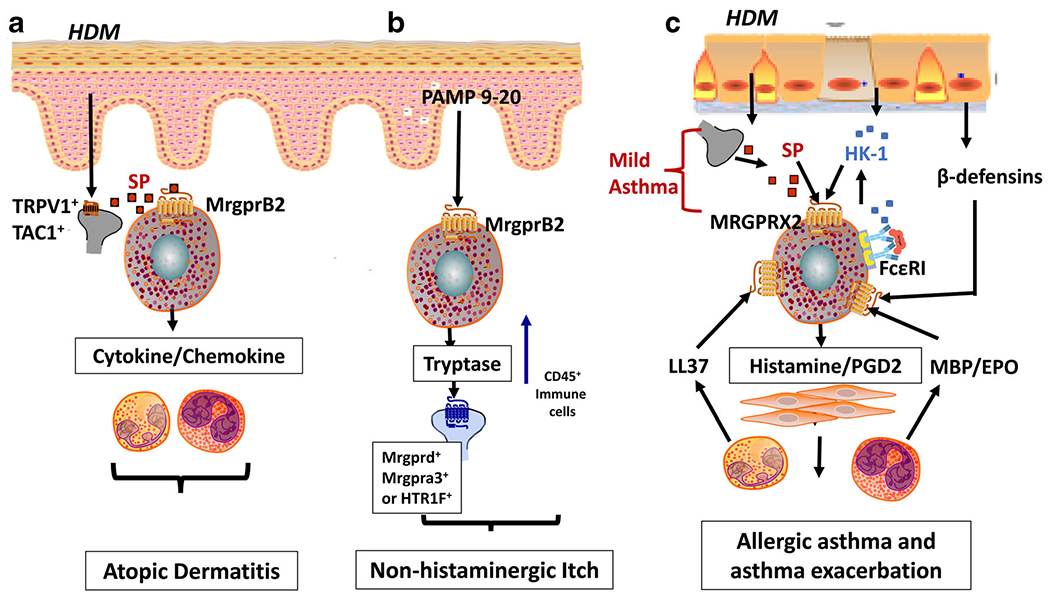Fig. 1.

MRGPRX2-mediated mast cell-nociceptor interaction in atopic dermatitis, itch, and allergic asthma. a Common domestic allergens, house dust mites (HDMs), directly activate TRPV1+Tac1+ sensory neurons to release neuropeptide substance P (SP), which induces mast cell degranulation and cytokine/chemokine production via MrgprB2 that drives the development of inflammation in atopic dermatitis. b Pro-adrenomedullin peptide 9-20 (PAMP 9-20) released from keratinocytes activates MrgprB2 resulting in the release of tryptase. Compared to classical IgE-FcεRI, MrgprB2 recruits CD45+ immune cells and excites distinct itch-sensory neuron populations expressing either Mrgprd, Mrgpra3, or HTR1F to induce non-histaminergic itch. c HDM exposure activates sensory nerves to produce SP, which activates MRGPRX2 in lungs to induce degranulation resulting in mild asthma. Hemokinin-1 (HK-1) produced from lung macrophages, bronchial cells and mast cells, and ligands generated from eosinophils (major basic protein (MBP) and eosinophil peroxidase (EPO)), neutrophils (cathelicidin LL-37), and epithelial cells (β-defensins) further activates mast cells via MRGPRX2 to induce degranulation and release inflammatory mediators (histamine, prostaglandin 2 (PGD2) to amplify the airway hyperresponsiveness resulting in allergic asthma exacerbation
